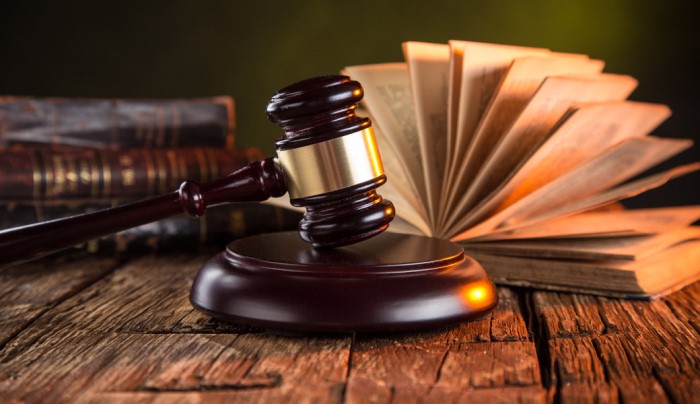Discover how copyright impacts educational technology. Learn about copyright laws, licensing models, and best practices for managing intellectual property in digital education.
Introduction
Overview of Copyright
Definition of Copyright
Copyright is a form of intellectual property protection granted to the creators of original works. It gives authors, artists, and other creators exclusive rights to reproduce, distribute, and display their creations. Copyright law ensures that creators can benefit from their works and control how they are used. Imagine you wrote a book or composed a piece of music; copyright protects your right to decide who can use or copy your work.
Historical Context of Copyright Laws
Copyright has evolved significantly since its inception. The first formal copyright law was established in 1710 with the Statute of Anne in England. This landmark legislation aimed to balance the interests of creators and the public, allowing creators to control their work for a limited time before it entered the public domain. Over the centuries, copyright laws have expanded globally, adapting to new technologies and societal needs.
Importance of Copyright in Modern Society
In today’s digital age, copyright plays a crucial role in fostering creativity and innovation. It provides a legal framework that protects creators’ rights while encouraging the sharing of knowledge and artistic expression. Without copyright, the incentives for creating new content could diminish, impacting industries like literature, music, and technology.
Overview of Educational Technology
Definition of Educational Technology
Educational technology refers to the use of digital tools and resources to enhance teaching and learning. This includes everything from online learning platforms and educational software to interactive whiteboards and virtual classrooms. Think of educational technology as the bridge connecting traditional teaching methods with modern, digital solutions.
Evolution and Impact of Educational Technology
Educational technology has come a long way since the days of overhead projectors and VHS tapes. The rise of the internet and digital devices has transformed how we learn and teach. Today, educational technology offers interactive and personalized learning experiences, making education more accessible and engaging.
Importance of Educational Technology in Learning
Incorporating technology into education helps cater to diverse learning styles and needs. It enables educators to deliver content more effectively and provides students with tools to learn at their own pace. Moreover, educational technology can break down geographical barriers, allowing learners from different parts of the world to access high-quality education.
The Intersection of Copyright and Educational Technology
The Role of Copyright in Educational Technology
How Copyright Affects Digital Educational Resources
Copyright impacts digital educational resources by determining how they can be used, shared, and modified. For example, an online course or eBook is protected by copyright, meaning that educators and students must adhere to specific usage guidelines. This ensures that creators are compensated for their work while allowing educational institutions to use resources legally.
Licensing Models for Educational Technology
Various licensing models address the use of educational technology. Traditional copyright licenses grant specific rights to users, such as the ability to copy or distribute content under certain conditions. Open access and Creative Commons licenses, on the other hand, allow for more flexibility, often enabling users to share and adapt content more freely. Understanding these licenses helps educators and institutions navigate copyright issues effectively.
Key Copyright Issues in Educational Technology
Fair Use vs. Copyright Infringement
Fair use is a legal doctrine that allows limited use of copyrighted material without permission for purposes such as criticism, commentary, news reporting, teaching, scholarship, or research. However, what constitutes fair use can be complex and varies depending on jurisdiction. Copyright infringement occurs when copyrighted material is used without authorization, which can lead to legal consequences.
Public Domain and Creative Commons Licenses
Materials in the public domain are not protected by copyright and can be freely used by anyone. Creative Commons licenses offer a range of permissions for using copyrighted works, from allowing free use with attribution to permitting modifications and commercial use. These licenses provide a practical way for educators to find and use resources legally while supporting the creator’s rights.
Copyright Laws and Educational Technology
Overview of Major Copyright Laws
The Copyright Act of 1976
The Copyright Act of 1976 is a significant piece of legislation in the United States that establishes the framework for copyright protection. It outlines the rights of authors, the duration of copyright, and exceptions such as fair use. This act has been amended several times to address new technological advancements and changing societal needs.
Digital Millennium Copyright Act (DMCA)
The DMCA, enacted in 1998, addresses copyright issues in the digital age. It provides a safe harbor for internet service providers and websites from liability for user-generated content, as long as they act promptly to remove infringing material when notified. The DMCA also includes provisions for combating digital piracy and protecting copyrighted works online.
Berne Convention for the Protection of Literary and Artistic Works
The Berne Convention, established in 1886, is an international agreement that sets minimum standards for copyright protection. It ensures that works created in one member country are protected in all other member countries, promoting global recognition of copyright and facilitating international copyright enforcement.
Copyright Exceptions for Educational Use
Classroom Use Exemption
In the United States, the Classroom Use Exemption allows teachers to use copyrighted materials in a classroom setting without needing permission from the copyright holder. This exemption supports the educational process by allowing educators to incorporate various resources into their lessons.
Reproduction for Educational Purposes
Reproducing copyrighted materials for educational purposes, such as creating copies of a book for a class, may be permissible under certain conditions. However, educators must be cautious to ensure that their use falls within the bounds of fair use and does not negatively impact the market value of the original work.
Online Learning and Copyright Exceptions
Online learning platforms present unique challenges for copyright. While the Classroom Use Exemption covers in-person teaching, online educators must navigate different rules. Many educational institutions rely on licensing agreements or Creative Commons resources to ensure compliance when delivering content online.
Licensing and Permissions
Types of Licenses for Educational Resources
Standard Copyright Licenses
Standard copyright licenses grant specific rights to users, such as the right to reproduce, distribute, or display a work. These licenses often come with conditions, such as attribution requirements or restrictions on commercial use. Understanding these licenses is crucial for educators who wish to use copyrighted materials legally.
Open Access and Creative Commons Licenses
Open Access and Creative Commons licenses offer more flexibility than traditional copyright licenses. Open Access materials are freely available to the public, while Creative Commons licenses allow users to share, adapt, and sometimes commercialize content under specified conditions. These licenses facilitate the use and dissemination of educational resources.
Obtaining Permissions for Educational Use
How to Request Permissions
When using copyrighted materials not covered by fair use or licenses, educators must request permission from the copyright holder. This process involves contacting the creator or publisher, explaining the intended use, and negotiating terms. Properly documenting these permissions is essential to avoid copyright infringement.
Navigating Copyright Agreements
Copyright agreements outline the terms under which materials can be used. These agreements may include conditions such as payment, usage limits, and attribution requirements. Understanding and adhering to these agreements helps ensure that educational institutions remain compliant with copyright laws.
The Impact of Digital Technology on Copyright
Digital Reproduction and Distribution
Challenges of Digital Copies
Digital technology has made reproducing and distributing content easier than ever, but this convenience comes with challenges. Unauthorized digital copies can spread quickly, leading to potential copyright infringement. Educators and institutions must implement strategies to manage digital content and protect intellectual property.
Solutions for Managing Digital Copies
To address the challenges of digital reproduction, educational institutions can use digital rights management (DRM) tools and secure platforms. DRM technology helps control access to digital content, while secure platforms ensure that resources are used only by authorized users. These solutions help balance the benefits of digital technology with copyright protection.
E-Learning Platforms and Copyright Compliance
Case Studies of Copyright Issues in E-Learning
Several case studies highlight copyright issues in e-learning. For example, some online platforms have faced legal challenges for hosting copyrighted materials without proper permissions. Analyzing these cases helps educators and institutions understand potential pitfalls and develop strategies for compliance.
Strategies for Ensuring Compliance
To ensure copyright compliance in e-learning, institutions can adopt practices such as using licensed resources, obtaining permissions, and educating staff and students about copyright laws. Implementing these strategies helps minimize the risk of infringement and supports responsible use of educational technology.
Innovations in Educational Technology and Copyright
Emerging Technologies in Education
Artificial Intelligence and Machine Learning
Artificial Intelligence (AI) and Machine Learning (ML) are transforming education by offering personalized learning experiences and automating administrative tasks. These technologies can analyze student performance and adapt content to individual needs, enhancing the learning process.
Virtual Reality and Augmented Reality
Virtual Reality (VR) and Augmented Reality (AR) provide immersive learning experiences, allowing students to explore complex concepts in a virtual environment. These technologies offer new opportunities for engagement but also present unique copyright challenges, such as licensing VR/AR content.
Copyright Challenges with New Technologies
Licensing Issues with AI-Generated Content
AI-generated content raises questions about copyright ownership and licensing. Determining who owns the rights to content created by AI, whether it’s the developer or the user, is an ongoing debate. Understanding these issues helps educators navigate the use of AI tools in education.
Intellectual Property Rights in VR/AR Content
VR/AR content involves various intellectual property rights, including those related to 3D models, software, and interactive elements. Ensuring that VR/AR content is used legally requires careful attention to licensing agreements and copyright laws.
Case Studies and Real-World Examples
Notable Copyright Disputes in Education
High-Profile Cases and Their Outcomes
Several high-profile copyright disputes in education have set important precedents. For example, cases involving the unauthorized use of textbooks or digital content have clarified the boundaries of fair use and copyright infringement. Examining these cases provides valuable insights into copyright issues.
Successful Models of Copyright Compliance
Institutions with Effective Copyright Practices
Some educational institutions have developed effective models for managing copyright. These models include implementing comprehensive copyright policies, providing training for staff and students, and using licensed resources. Learning from these examples helps other institutions develop their own copyright practices.
Best Practices for Managing Copyright in Educational Technology
Creating and Using Copyright-Compliant Content
Guidelines for Educators and Institutions
To create and use copyright-compliant content, educators should follow guidelines such as using licensed resources, adhering to fair use principles, and providing proper attribution. Institutions can support these efforts by developing clear copyright policies and offering training.
Tools for Copyright Management
Several tools can assist in managing copyright, such as copyright management software, licensing databases, and digital rights management systems. These tools help educators track usage, obtain permissions, and ensure compliance with copyright laws.
Educating Stakeholders on Copyright Issues
Training Programs for Educators and Students
Education about copyright is essential for avoiding infringement and promoting responsible use of resources. Training programs can cover topics such as copyright laws, fair use, and licensing options. Providing this education helps stakeholders navigate copyright issues effectively.
Resources for Copyright Education
Various resources are available to help educators and students learn about copyright, including online courses, workshops, and informational websites. These resources provide valuable information and guidance on managing copyright in educational settings.
Future Trends in Copyright and Educational Technology
Predictions for Copyright Law Evolution
Anticipated Changes in Legislation
As technology continues to evolve, copyright laws are likely to undergo changes to address new challenges. Predictions include updates to fair use provisions, international copyright agreements, and increased protection for digital content. Staying informed about these changes helps educators and institutions prepare for future developments.
Impact of International Agreements
International agreements, such as the Berne Convention and TRIPS Agreement, play a significant role in shaping copyright laws globally. Future agreements may address emerging issues related to digital content and cross-border copyright enforcement, impacting educational technology practices.
Future Directions for Educational Technology
Innovations on the Horizon
The future of educational technology includes advancements such as immersive learning environments, AI-powered tutoring systems, and personalized learning platforms. These innovations promise to enhance education further but will also require careful consideration of copyright issues.
Preparing for Future Copyright Challenges
As educational technology evolves, new copyright challenges will arise. Educators and institutions can prepare by staying informed about emerging technologies, understanding evolving copyright laws, and adopting best practices for managing intellectual property.
Conclusion
Throughout this article, we’ve explored the intersection of copyright and educational technology. We’ve examined the role of copyright in digital education, discussed key copyright issues, and analyzed the impact of emerging technologies. By understanding these aspects, educators and institutions can navigate copyright challenges effectively.
To ensure responsible use of educational technology, it’s essential to proactively manage copyright issues. Educators should stay informed about copyright laws, seek permissions when needed, and educate stakeholders about best practices. For further learning, explore resources on copyright management and educational technology.




